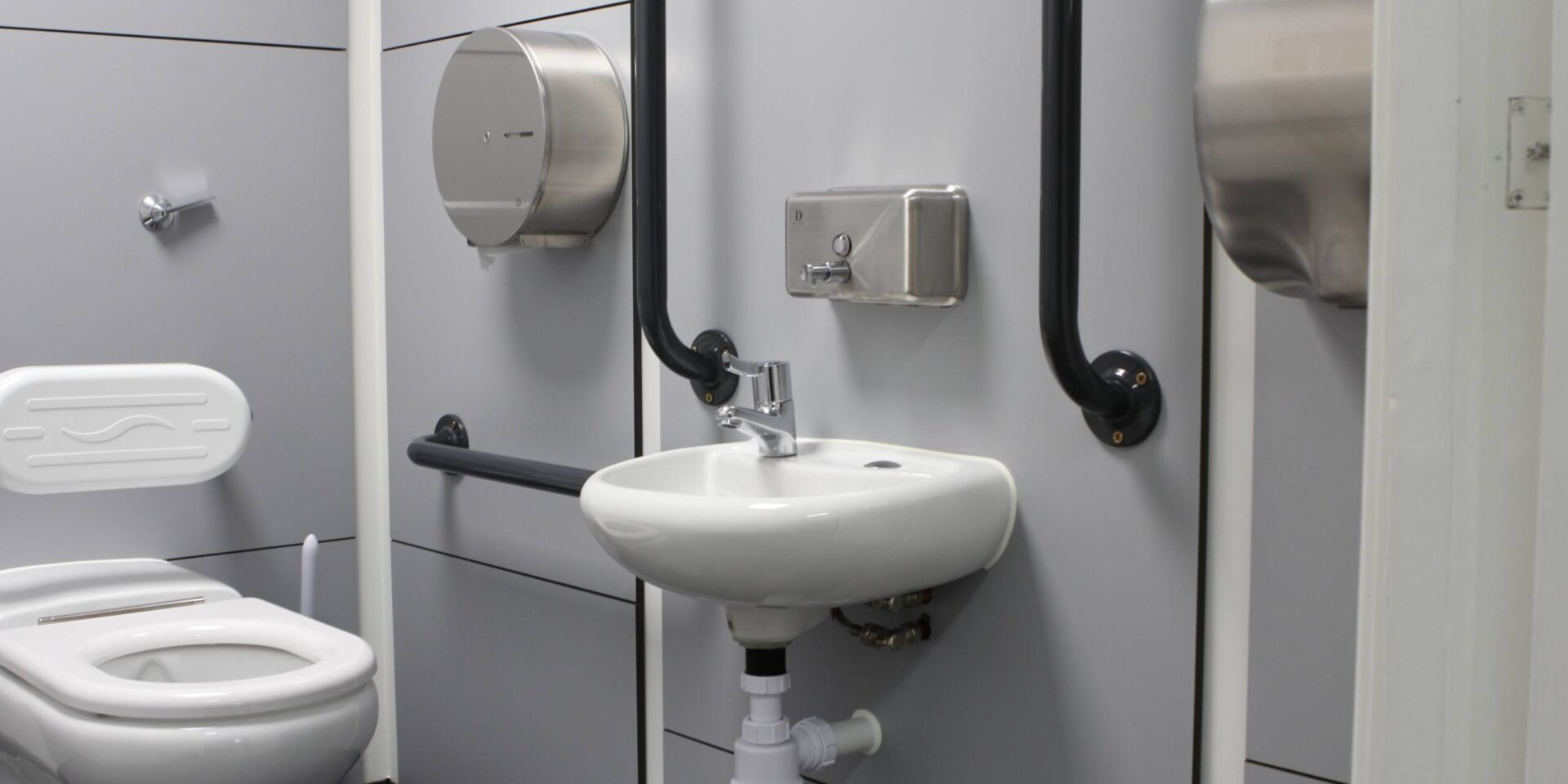What is Changing Places?
A Changing Places facility is a fully-equipped, accessible bathroom designed to meet the needs of people with disabilities who are unable to use standard toilets. This includes individuals with mobility impairments, those who use a wheelchair, or those with medical conditions that require additional equipment and space. This type of facility offers a much-needed, safe solution for people who require more space and specialised equipment to assist with personal care.
Before Changing Places
Before CP toilets, many disabled people and their carers had to endure risks to their health and safety when using toilets that were not appropriately designed for them. Without a suitable changing bench, they had little to no choice but to use the floor, which is unsafe, unhygienic and undignified. The lack of proper sanitation facilities also discouraged participation in social events and communal activities. A seemingly simple initiative like Changing Places proved to be truly life-changing for thousands of people with disabilities, as it allowed them to stay out longer without worry and participate more fully in various outdoor activities.
Changing Places Requirements
It is important for a Changing Places facility to be designed and installed with the user in mind, ensuring that it is both functional and accessible. In order to provide a safe and comfortable environment, a Changing Places facility should include the following:
1.Height adjustable changing bench
A bench that can be raised or lowered to accommodate people with different needs. This allows for a safe and comfortable transfer from a wheelchair to the bench, should be at least 1800mm long and 800mm wide.
2. Hoist system
A ceiling or wall-mounted hoist system that is used to transfer people from their wheelchair onto the changing bench. This is essential for those who require assistance with mobility and ensures that they can be moved safely and with dignity.
3. Adequate floor space
A large enough space to allow for a wheelchair, two carers, and room to move around the bench. This provides ample room for the user and their carers to maneuver in the space and allows for the necessary equipment to be easily accessible.
4. Safety systems
Standard safety features of an accessible WC should be met, such as the addition of grab rails to aid in manoeuvring, and an emergency alarm system should extra help be required.
5. Easy-to-clean surfaces
The facility should be constructed with materials that are easy to clean and maintain. This ensures that the facility remains hygienic and well-maintained for all users.
6. Sink
A sink that is accessible for individuals in a wheelchair; it must have room for knee space. This is essential for individuals who require assistance with personal care and ensures that they have access to a sink at a suitable height.
7. Toilet
A peninsular toilet that is accessible for individuals in a wheelchair, with a seat height of 480mm. This is an essential component of a Changing Places facility and ensures that individuals have access to a toilet that they can use comfortably and safely.
In summary, a Changing Places facility is an essential piece of infrastructure for people with disabilities. It provides individuals with the space, equipment, and privacy they require to live with dignity and independence.
Our Approach
At Interfix, we understand the importance of accessible facilities for people with disabilities. Our team of experts will work with you to create a facility that meets your specific needs and requirements, taking into account the environment in which the facility will be used to ensure that it is functional, safe, and accessible, so that everyone has access to the facilities they need.
Whether you are looking to install a Changing Places facility in a commercial building, a shopping center, or a sporting venue, we have the experience and expertise to ensure that it is fully functional and meets all of the necessary regulations. We take pride in our work and strive to provide our clients with the best possible solution for their needs.
Contact us today to learn more about how we can help.



